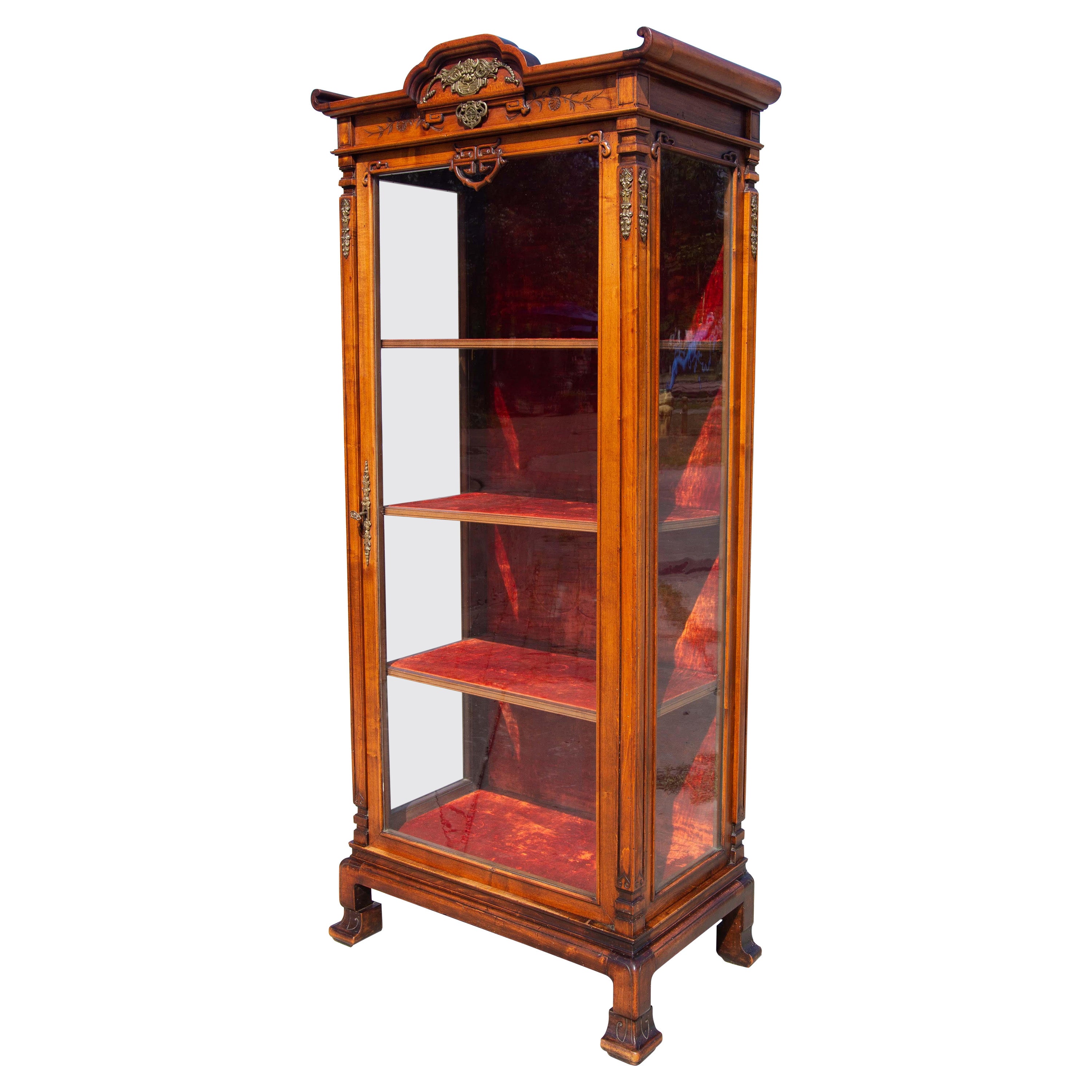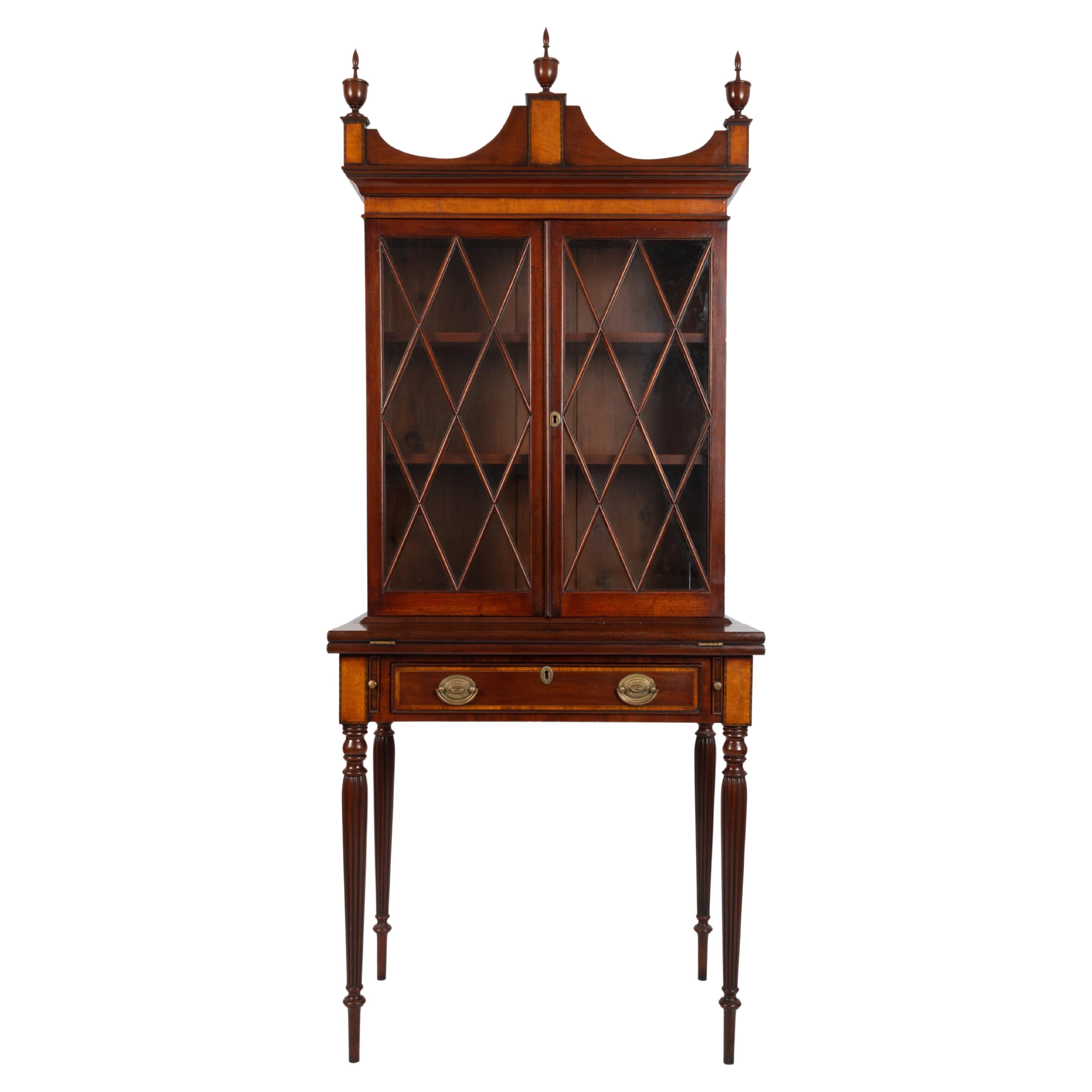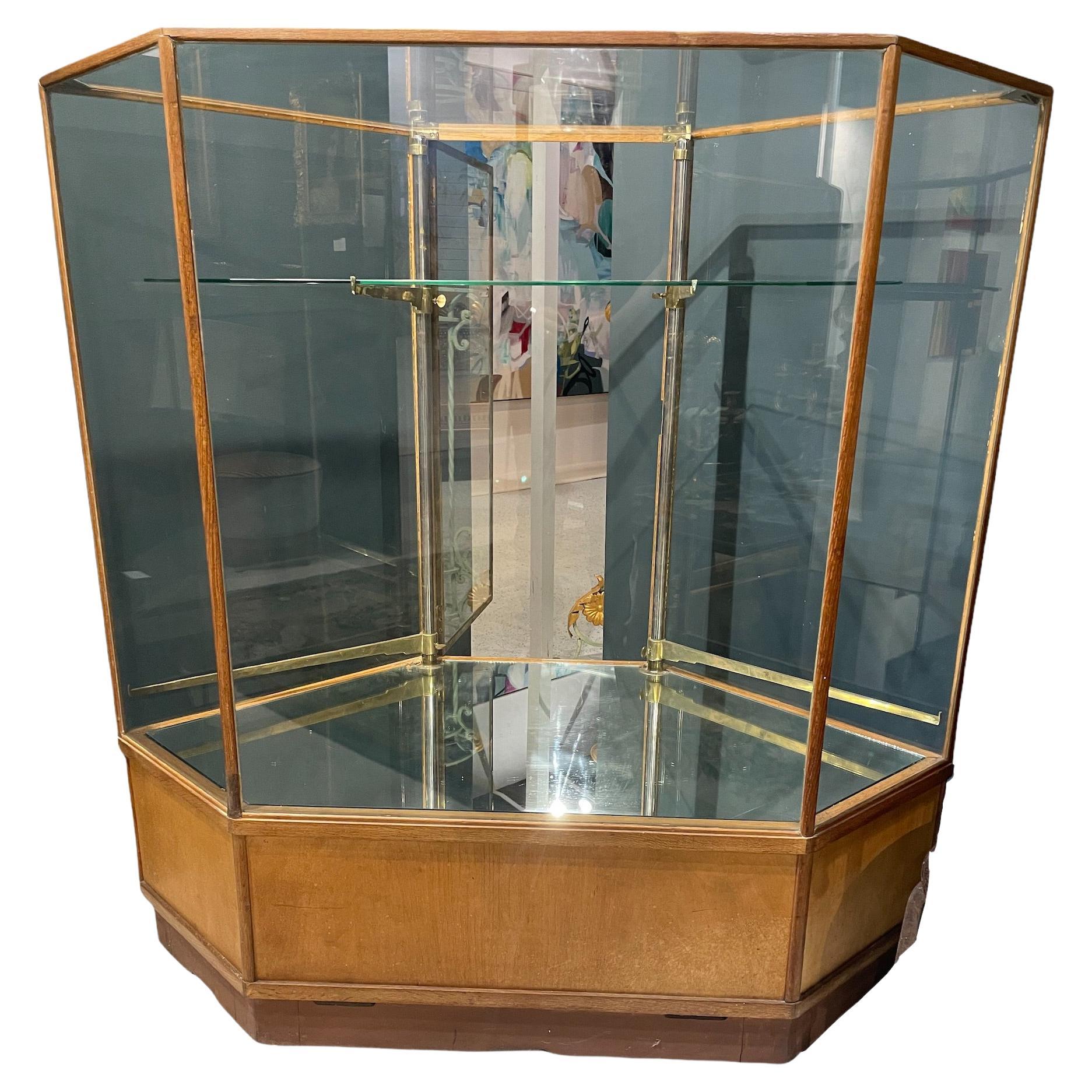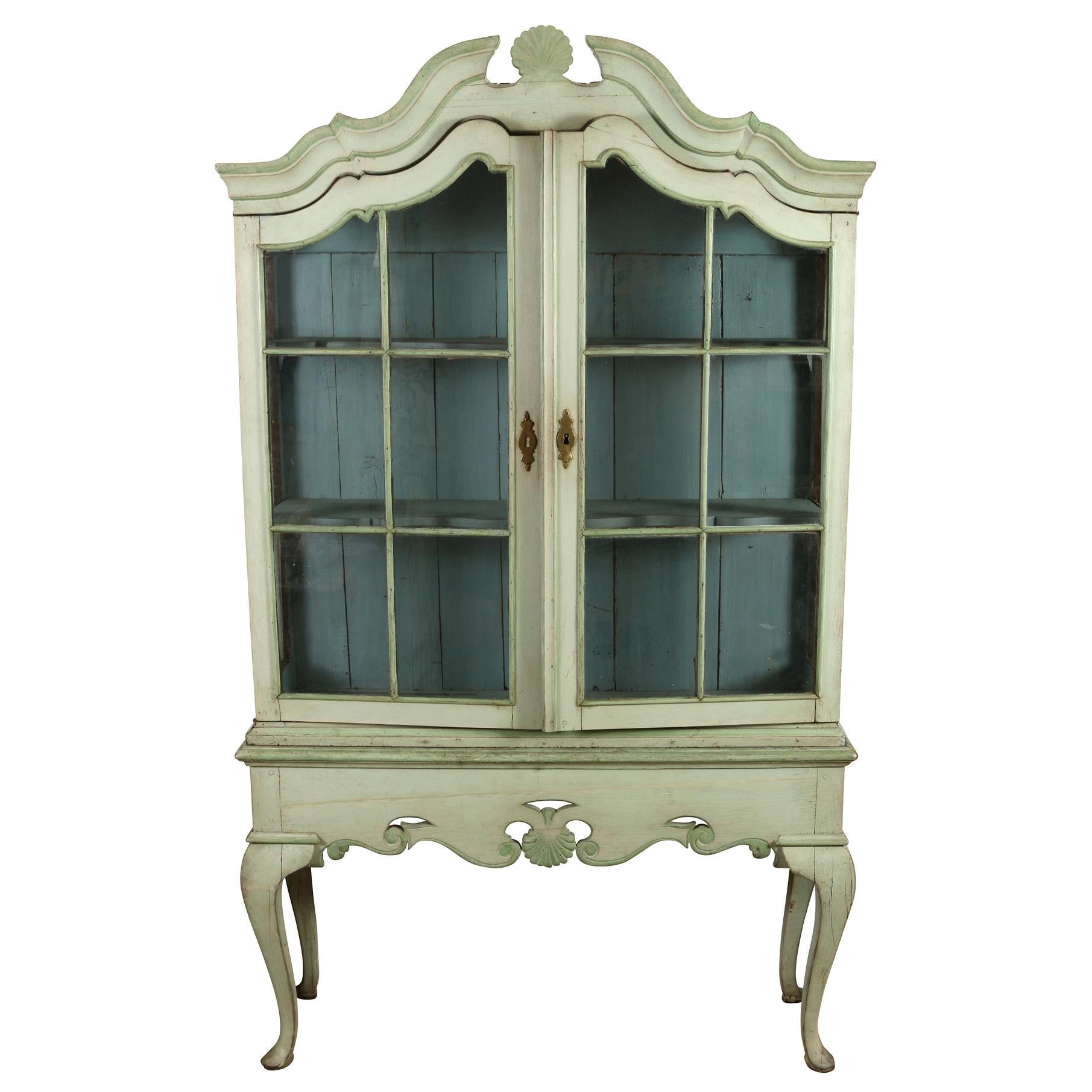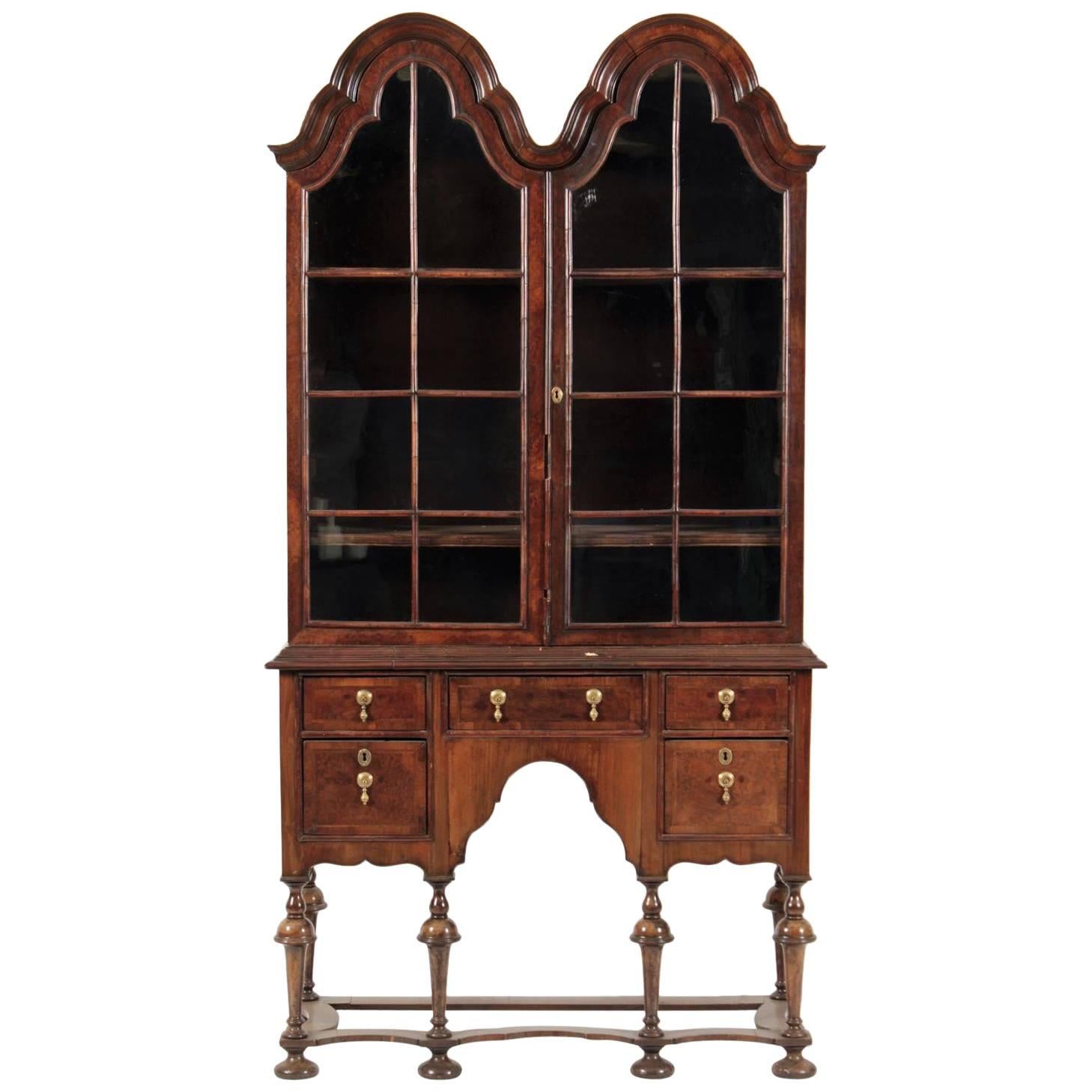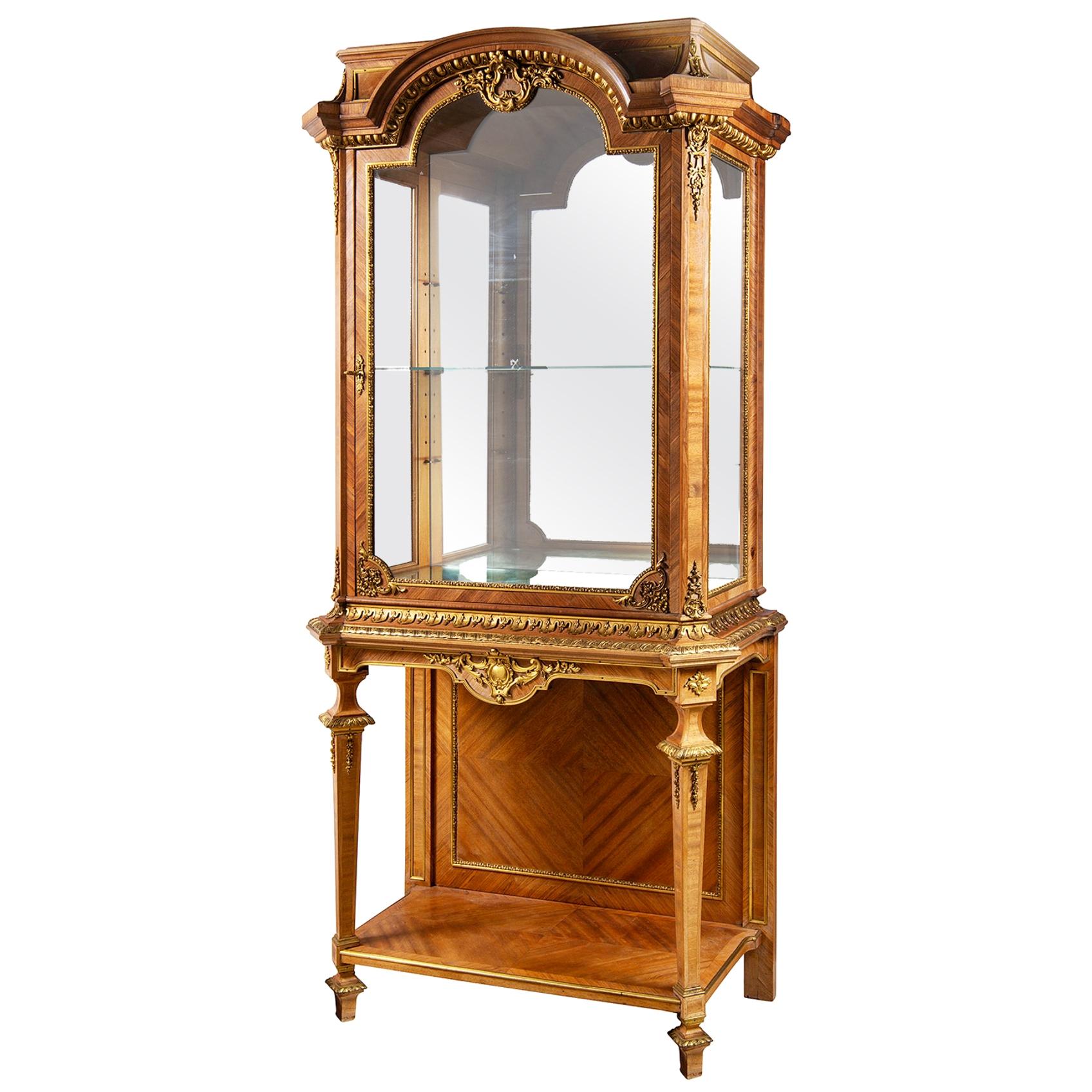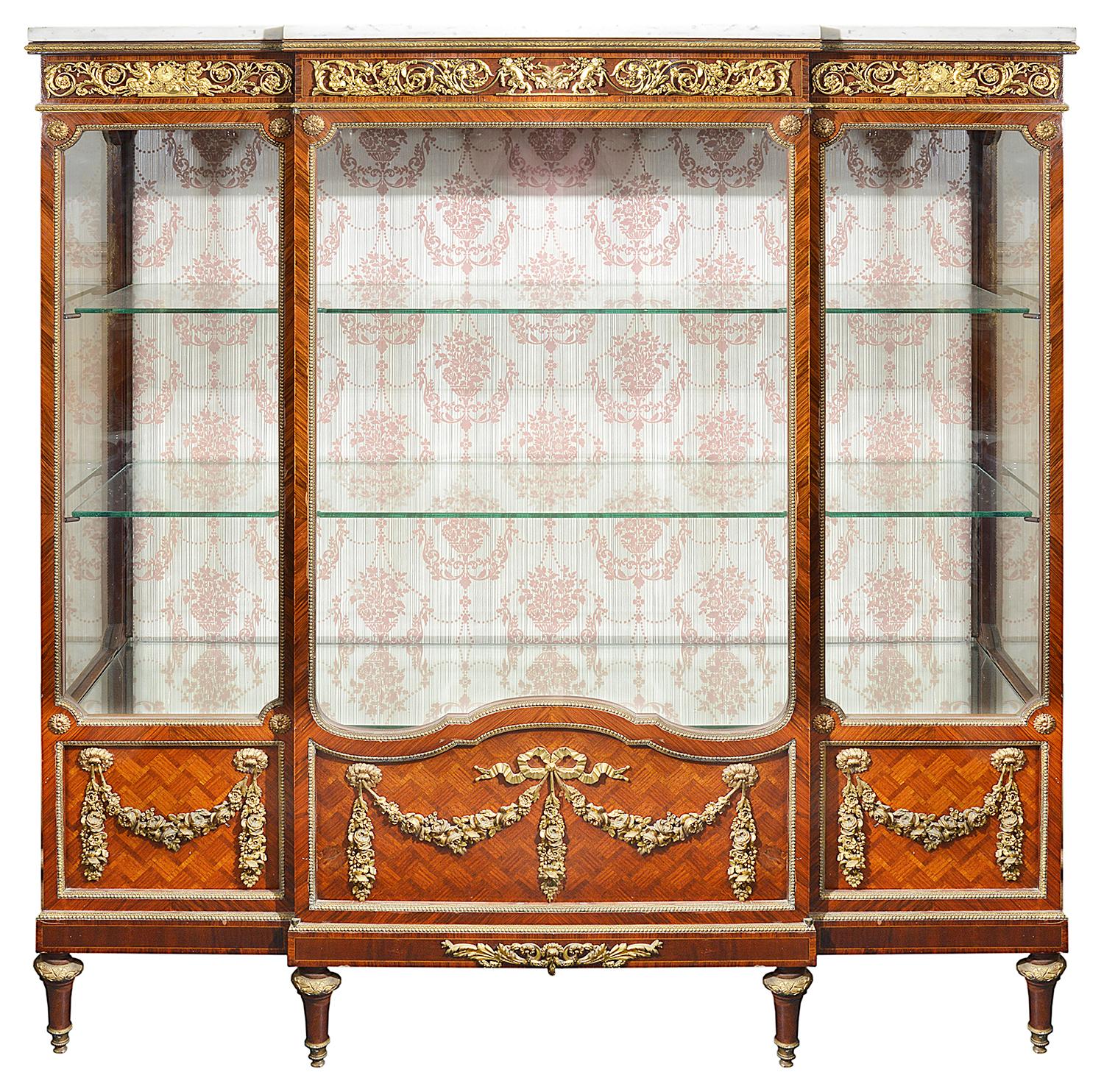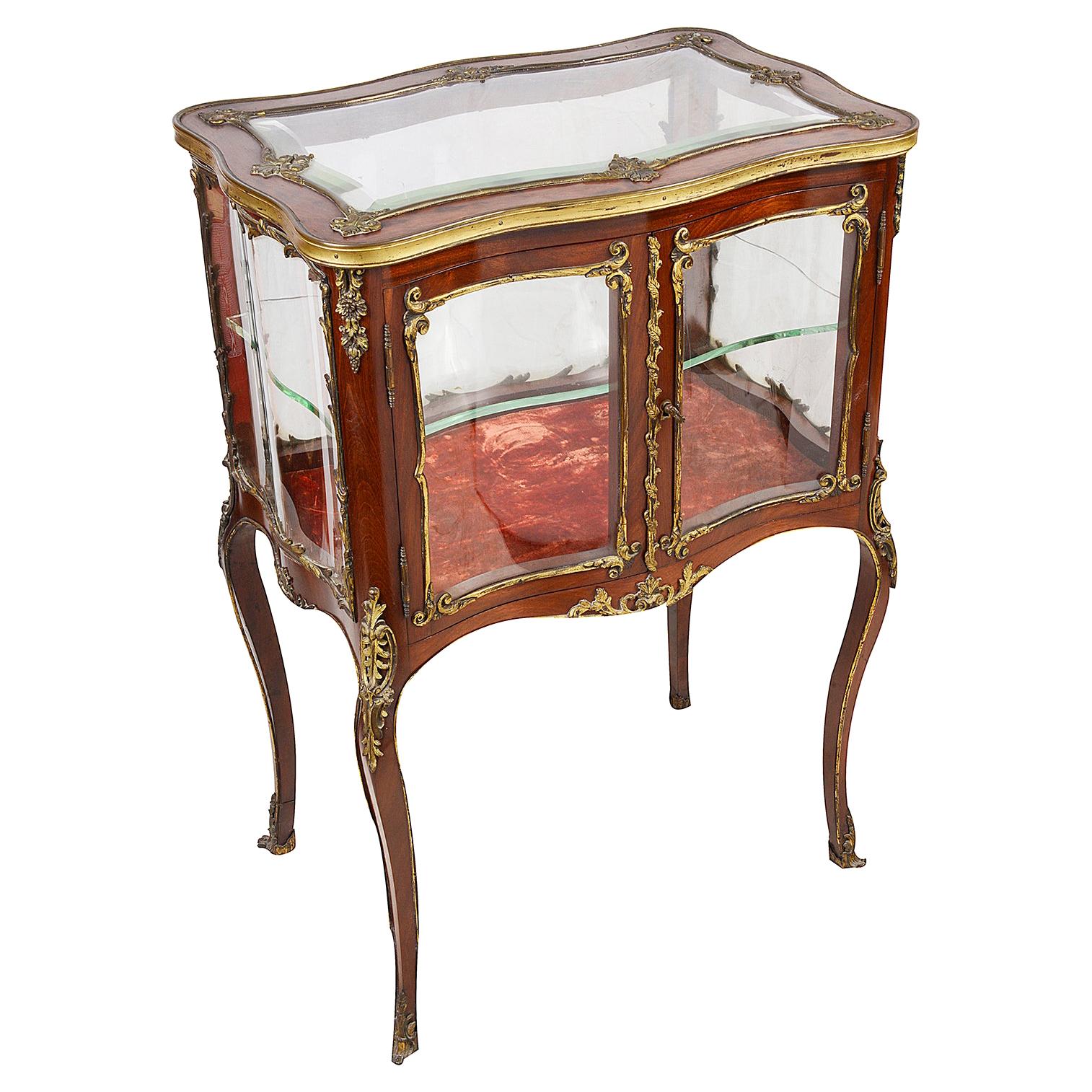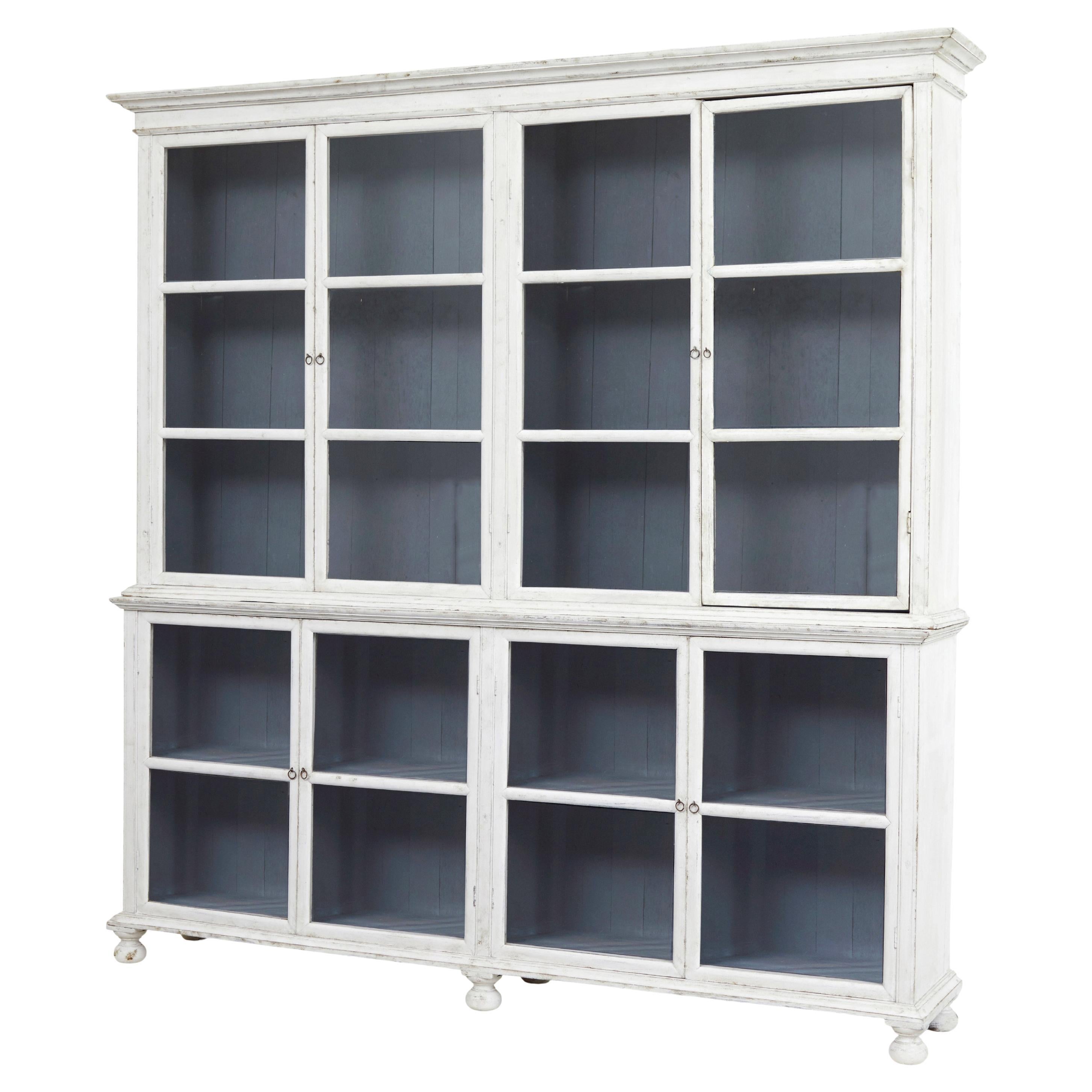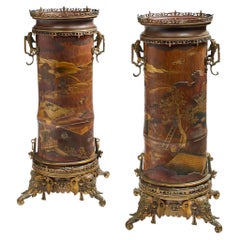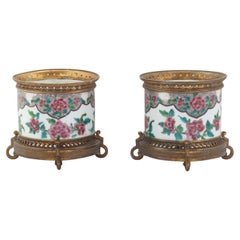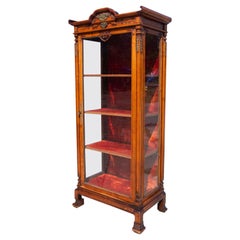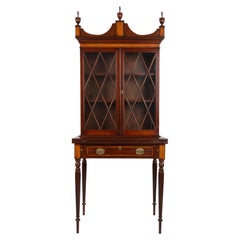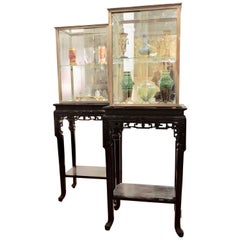
19th Century Japonisme Pair of Display Windows on Stand
View Similar Items
Want more images or videos?
Request additional images or videos from the seller
1 of 11
19th Century Japonisme Pair of Display Windows on Stand
About the Item
- Attributed to:Gabriel Viardot (Maker)
- Dimensions:Height: 70.08 in (178 cm)Width: 25.6 in (65 cm)Depth: 16.15 in (41 cm)
- Sold As:Set of 2
- Style:Japonisme (Of the Period)
- Materials and Techniques:
- Place of Origin:
- Period:
- Date of Manufacture:circa 1890
- Condition:Wear consistent with age and use.
- Seller Location:Saint-Ouen, FR
- Reference Number:1stDibs: LU261239399953
About the Seller
4.9
Vetted Seller
These experienced sellers undergo a comprehensive evaluation by our team of in-house experts.
1stDibs seller since 2017
55 sales on 1stDibs
Typical response time: 1 hour
More From This SellerView All
- French 19th Century Pair of Lacquered Bamboos Japonisme VasesBy Edouard Lievre, Ferdinand BarbedienneLocated in Saint-Ouen, FRA 19th French century pair of Lacquered Bamboos Japonisme vases. An amazing pair of tall cylindrical bamboo vases decorated in Japanese Gold and Sil-ver Hiramaki-E Lacquer with Pavilions in The Mist and Weaving Figures, Flown Over by a Pair of Cranes. Enclosed in a Sino-Japanese Inspiration Golden and Brown Patina Bronze Mount Featuring Elephant Heads, Partially Openwork Branches and Salamanders Forming Side Handles. Circa 1870 Attributed to Édouard Lièvre (1828-1886) and Ferdinand Barbedienne (1810-1892) Édouard Lièvre (1828-1886) is one of the most talented and prolific designer and industrialist of the 19th Century, his repertoire is sometimes Sino-Japanese or Neo-Renaissance, whether in furniture or works of art, we can note in particular the parade bed of Valtesse de La Bigne, furniture commissioned by the painter Édouard Detaille or even Sarah Bernhardt, and the famous works in collaboration with Maison Christofle or those in gilded bronze and cloisonné enamel edited by Ferdinand Barbedienne, presented at the Universal Exhibitions in 1878, 1889 and 1900. He was both a draftsman, painter, illustrator, engraver, ornamentalist and cabinetmaker, first trained in the studio of the painter Thomas Couture, Lièvre was then fully immersed in the world of decoration, creation and ornamentation and provides designs for manufacturers and merchant-publishers. Often assisted by his brother Justin, he first produced works of art for his own apartment, seeking out the finest craftsmen to execute his designs for bronzes, ceramics, fabrics and luxury furniture from great virtuosity and great taste. He then collaborated with the cabinet-maker Paul Sormani, as well as haberdasher merchants such as the Escalier de Cristal, bronziers such as Maison Marnyhac and especially Ferdinand Barbedienne as on our vases with bronze mounts characteristics of Edouard Lièvre's work. Born in 1810, died in Paris in 1892, Ferdinand Barbedienne, the most important caster of bronze pieces of art during the second half of the 19th Century, created and directed in Par-is one of the major artistic foundries of his time. Barbedienne specialized in classical reproductions, whose models were exposed in famous European museums. Their illustrated catalogues included many diverse objects such as busts, ornemental sculpture (clocks, candelabras, cups) sometimes even life-sized and bronzes for furniture. Apart from his own produc-tion, Barbedienne worked for the most renowned sculptors such as Barrias, Clésinger and Carrier-Belleuse. All his works were highly esteemed and he, himself honored by contemporary critics. At the London exhibition in 1851 Barbedienne’s firm won two « Council medals ». At the 1855 Universal Exhibition, he won a medal of honor. The success of Barbedienne’s firm brought him many official commissions, such in about 1860, as Barbedienne supplied bronzes for furniture for the Pompeian Villa of Prince Napoléon-Joseph, located avenue Montaigne in Paris. At the London Universal Exhibition of 1862 Barbedienne won medals in three different categories: Furniture, Silversmith work and Artistic bronzes. Barbedienne was made an officer of the Légion d’Honneur in 1867 and Commander in 1878 when he was compared with « a prince of industry and the king of bronze casting ». His glory did not decline with the passage of the time for at the Universal Exhibition of 1889 the critics thanked Barbedienne for the example he set for other bronze-casters by the perfection of his bronzes. “Japonisme” in the second half of the 19th century, was a craze for everything that came from Japan or imitated its style. The word was first coined in a series of articles published by Philippe Burty, from May 1872 to February 1873, in the French magazine “la Renaissance Littéraire et Artistique”. Far from the Academic sphere, artists seeking for new ways of expression, appropriated this discovery. Manet and the impressionists led the way to half a century of enthusiasm for Japanese art, and largely contributed to the esthetical revolution Europe experienced between 1860 and the beginning of the twentieth century. From 1862, The World’s Fairs provoked massive arrivals of fans, kimonos, lacquers, bronzes, silks, prints and books that launched the real era of Japonisme. With those exhibitions, the demand was boosted, the number of merchants and collectors was multiplied, and artists became passionate about this new esthetic. For them, its “primitivism” was probably its most important quality: artists were fond of the Japanese art’s capacity to be close to nature and to reconcile art and society by representing, with a lot of care, the most trivial objects. In painting, Edouard Manet, Mary Cassatt, Degas, Van Gogh, Gauguin were among those who were deeply inspired by Japanese art, affected by the lack of perspective and shadow, the flat areas of strong color, the compositional freedom in placing the subject off-center, with mostly low diagonal axes to the background. The Japanese iris, peonies, bamboos, kimonos, calligraphy, fish, butterflies and other insects, the blackbirds, cranes and wading birds, the cats, tigers, and dragons were endless sources of inspiration, appropriation, and reinterpretation for European artists. The occidental productions were combining styles and artistic conceptions instead of copying Japanese art slavishly. That is what brings to light the comparison between the artworks of Kitagawa Utamaro and Degas, of Katsushika Hokusai and Van Gogh The World’s Fairs of 1851 and 1862 in London, those of 1867, 1878, 1889 and 1900 in Paris, of 1873 in Vienna and of 1904 in Saint Louis presented a number of “Japanese-Chinese” installations with earthenware, bronzes, screens and paintings and attracted the largest amounts of visitors In Vienna, the “Japanese village...Category
Antique 1870s French Japonisme Vases
MaterialsBronze
$42,250 Sale Price / set35% Off - French Japonisme Lacquered Metal Jardinière on Ormolu Stand Signed MarnyhacBy Maison Marnyhac 1, Edouard LievreLocated in Saint-Ouen, FRJardinière Médicis vase shape in copper with gold lacquered decoration on a burgundy background of a Japanese landscape with a volcano and an eagle ...Category
Antique 1870s French Japonisme Planters, Cachepots and Jardinières
MaterialsMetal, Bronze
$18,400 Sale Price20% Off - French 19th Century Pair of Porcelain Cache-PotsLocated in Saint-Ouen, FRPair of polychromed hand painted porcelain with Japonisme floral decoration Ormolu-mounted with open-worked base and rim Louis XVI Style circa 1880.Category
Antique 1870s French Chinoiserie Planters, Cachepots and Jardinières
MaterialsOrmolu
$1,913 Sale Price / set20% Off - 19th Century Pair of Neo Greek Sellettes en AthéniennesBy Ferdinand BarbedienneLocated in Saint-Ouen, FRA French 19th century very unusual and decorative pair of neo greek gilt and patinated cast iron sellettes en athéniennes With red griotte marble bassin...Category
Antique 1870s French Greek Revival Pedestals
MaterialsGriotte Marble, Metal, Ormolu
- A Very Fine Quality 19th Century French Pair of CandlesticksLocated in Saint-Ouen, FRVery Fine French 19th Century Pair of Candlesticks In ormolu, very finely chiseled and decorated with knotted garlands, branches of leafy flowers, spokes of hearts, leaves of water...Category
Antique 1870s French Louis XVI Candlesticks
MaterialsOrmolu
- A French 19th Century Pair of Louis XIV Style StoolsLocated in Saint-Ouen, FRA French 19th Century Pair of Large Rectangular Stools natural and carved wood. The 4 sheaths feet carved and linked by a stretcher. Louis XIV Style Napoléon III Period Circa 1880...Category
Antique 1880s French Louis XIV Stools
MaterialsBeech
You May Also Like
- Japonisme Mother of Pearl Inlaid Hardwood Display Cabinet after ViardotBy Gabriel ViardotLocated in London, GBThis wonderful display cabinet is designed in a ‘Japonisme’ (Japanese) style, which was popular in Europe in the mid-late 19th century. This craze was kick-started by Japan reopening to trade with the West, and exporting Japanese goods—including furniture and decorative art—to Europe. One craftsmen by the name of Gabriel Viardot (1830-1906) established a name for himself in France producing Chinese and Japanese style furniture...Category
Antique Late 19th Century French Japonisme Furniture
MaterialsMetal
- 19th Century French Japonisme Cabinet Attributed to Gabriel ViardotBy Gabriel ViardotLocated in Rochester, NYExotic Japanese French vitrines attributed to Gabriel Viardot. Carved hardwood with Fine brass mounts. Interior with old silk velvet. Great size. France. 19th century. Gabriel...Category
Antique 19th Century French Vitrines
MaterialsBrass
- Antique English 19th Century Sheraton Revival Mahogany Display Cabinet on StandLocated in London, GBAntique English 19th century Sheraton revival mahogany display cabinet on stand. A 19th century mahogany display cabinet on stand,...Category
Antique 19th Century English Sheraton Vitrines
MaterialsGlass, Mahogany
- French 19th Century Display ShowcaseLocated in palm beach, FLHexagonal corner cabinet from a Parisian art gallery, this elegant vitrine is glazed on six sides on a wooden base. A practical and easy system allows adjusting the height of the two...Category
Antique 1880s French Vitrines
MaterialsBrass
$7,360 Sale Price37% Off - Chinoiserie Display Cabinet, 19th CenturyLocated in Savannah, GA19th century chinoiserie display cabinet with glass shelves, two hidden drawers, and opening to two bottom doors.Category
Antique 19th Century English Cabinets
MaterialsWood
- Pair 19th Century French Marquetry Inlaid Display CabinetsLocated in Brighton, SussexA pair of very good quality pair of late 19th century French Louis XVI style bombe vitrines, each with scrolling foliate and rams head gilded ormolu mounts, wonderful marquetry + par...Category
Antique 19th Century French Vitrines
MaterialsOrmolu
Recently Viewed
View AllMore Ways To Browse
Pair Window Mirrors
Viardot Gabriel
Gabriel Viardot Cabinet
Viardot Gabriel Mirror
Gabriel Viardot Display Cabinet
Corner Display Vitrine
Pair French Vitrine
Vitrine On Stand
Marquetry Showcase
French Curved Glass Vitrine
French Marquetry Vitrine
Antique Vitrine 1900
Dining Room Curio Cabinet
Glass Shop Vitrine
Antique Bronze Vitrine
Macassar Display
Vintage Glass Panes
Vitrine Curio

